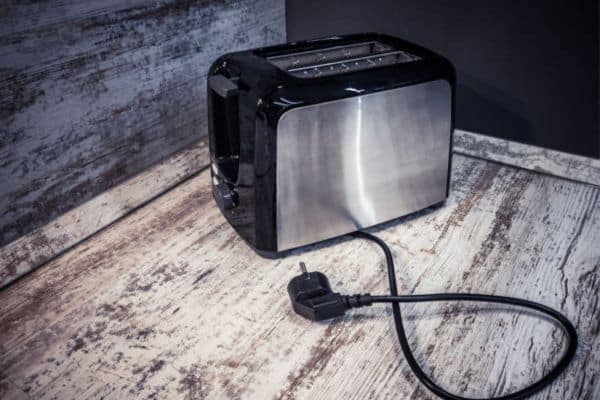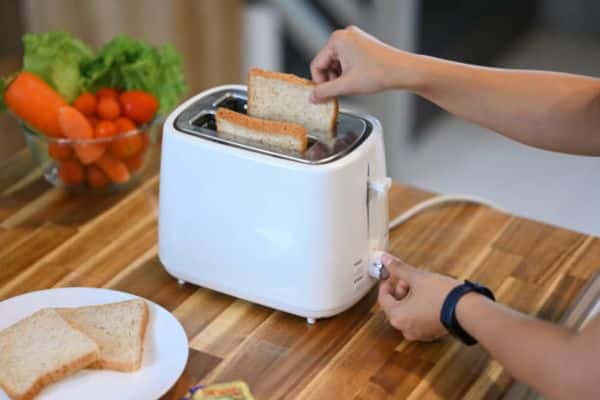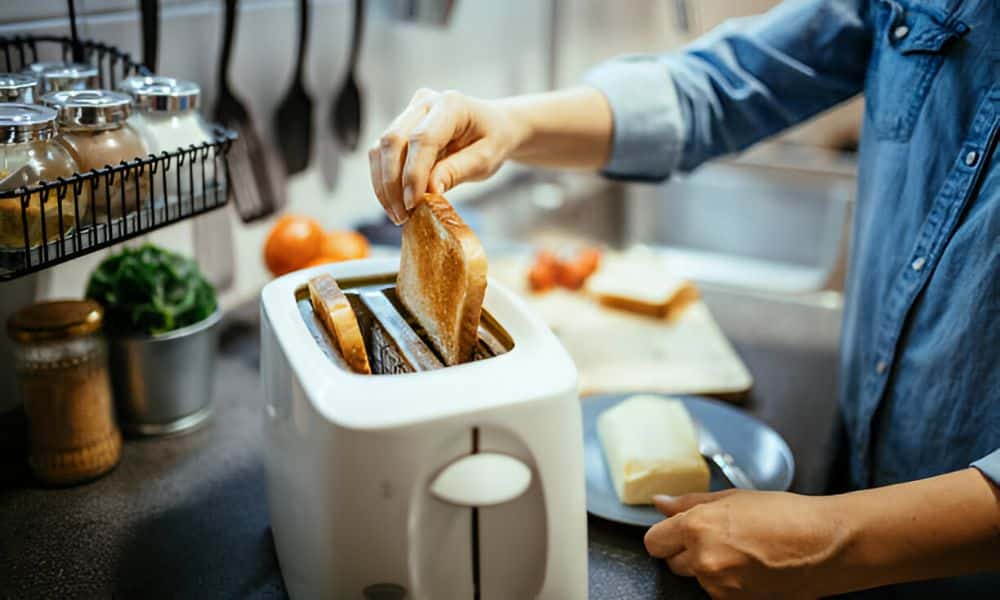Ever wondered How Many Amps Does A Toaster Use when you’re making your morning toast? I used to ignore things like toaster wattage and amps, until one day my kitchen breaker tripped mid-breakfast. That little hiccup pushed me to learn not just how much electricity does a toaster use, but also how it compares to a toaster oven. In this guide, I’ll share what I found—simple math, real-life costs, and a few personal lessons to keep your mornings smooth. Stick around, because you might just save money and avoid a few surprises in the kitchen.
Understanding Toaster Wattage and Amps
Wattage tells you how much power an appliance uses. A toaster with higher wattage heats faster and draws more current. In simple terms, watts measure power, and amps measure flow.
The math is easy. In the U.S., most homes run on 120 volts. Use this formula: Amps = Watts ÷ Volts. A 1200-watt toaster ÷ 120 volts = 10 amps. That’s it.
Most toasters use 800–1800 watts. This means they draw between 6 and 15 amps. My toaster pulls close to 10 amps, and I learned that the hard way when I tripped a breaker one morning.
Here’s a quick guide:
- 800W toaster ≈ 6.6 amps
- 1200W toaster ≈ 10 amps
- 1800W toaster ≈ 15 amps
How Much Electricity Does a Toaster Use?

A toaster only runs for a few minutes, so it doesn’t use much power. On average, making two slices of toast takes about 0.05–0.1 kWh of electricity. That’s less than what many light bulbs use in the same time.
Let’s do the math. In the U.S., the average electricity cost is about 15 cents per kWh. If your toaster uses 1200 watts (1.2 kW) and runs for 5 minutes, that’s 0.1 kWh. Multiply by the cost, and your toast costs about 1.5 cents.
I tested this with my own toaster. I use it almost every morning, which adds up to around 40–50 cents per month on my bill. Honestly, I was surprised it was so cheap, since I once thought my toaster was a power hog.
Here’s a simple tip: unplug your toaster when not in use. Some models draw a tiny bit of standby power, especially if they have digital displays. You can also look for energy-efficient models, but the real savings come from mindful use.
Toaster Oven Amps vs. Regular Toaster
A regular 2-slice toaster usually uses 800–1200 watts, which means about 6–10 amps on a 120V outlet. A toaster oven is larger and stronger, often rated at 1200–2000 watts. That means it can pull 10–16 amps, sometimes close to the limit of a standard 15-amp kitchen circuit.
The reason toaster ovens draw more power is simple: they heat a bigger space and run longer. Instead of just warming two slices of bread, they heat coils, a chamber, and often stay on for 10–15 minutes.
I learned this the hard way. I once swapped my old pop-up toaster for a shiny new toaster oven. The first week, I ran it while the microwave toaster was on—and boom, the breaker tripped. That’s when I realized how much current these little ovens really pull.
So, which one saves energy? For a quick breakfast, a regular toaster is more efficient. It uses less power and finishes faster. But if you’re baking pizza slices or roasting veggies, a toaster oven wins. It might use more amps, but it can replace your big oven, which saves energy overall.
Why Knowing Amps Matters

Knowing how many amps a toaster uses isn’t just trivia—it keeps your kitchen safe. If a toaster pulls 10–15 amps, and you add another big appliance on the same line, the breaker can trip. Short answer: checking amps helps prevent overloads and sudden power cuts.
Most U.S. kitchens have 15-amp or 20-amp circuits. A 15A circuit can handle one toaster, but not much else at the same time. A 20A circuit gives a bit more room, but it can still overload if you run a toaster plus a microwave or coffee maker together.
Here’s a practical tip: don’t run your toaster and microwave on the same outlet. I’ve done that before, and the breaker snapped right in the middle of breakfast. Keeping them separate saves you from both frustration and possible wiring damage.
My Personal Tips for Using a Toaster Efficiently

I once plugged my toaster into an energy meter just to see what it used. The reading showed about 10 amps, which matched the label.
Small habits can also save power. Use the right browning setting so you don’t need to toast twice. Clean out crumbs often, since buildup makes the toaster work harder.
Sometimes a toaster oven is the better choice. If I’m making toast for four people or heating pizza, it’s more efficient than running my big oven. But for a single slice, nothing beats a pop-up toaster.
FAQs
How many amps does a 2-slice toaster use?
Most 2-slice toasters use 6–10 amps on a standard U.S. outlet. Short answer: a 2-slice toaster usually draws about 6–10 amps.
How many amps does a 4-slice toaster use?
A 4-slice toaster has a higher wattage, often between 1400–1800 watts. That means it can pull 10–15 amps.
Do toasters use a lot of electricity?
Not really. A single toasting cycle costs only 1–2 cents in most U.S. homes. Even daily use adds less than a dollar a month to your bill.
Can I run a toaster on the same outlet as a microwave?
It’s best to avoid it. Both appliances draw a lot of power and can overload a 15-amp circuit.
Conclusion
Most toasters are safe, simple, and don’t use as much power as we think. If you use them the right way, they’re both energy-friendly and reliable.
The key takeaway is clear: a typical toaster uses between 6 and 15 amps, depending on its wattage. Knowing this helps you avoid overloads, save money, and use your kitchen more wisely.
So here’s my tip—check the label on your own toaster. You might be surprised by what you find.


